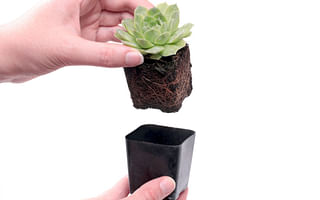Avery Martinez is a succulent blogger and has been writing about succulent care for over 5 years. She enjoys sharing her knowledge and experiences with other succulent enthusiasts. When she's not writing, Avery likes to travel and try new foods.
Yes, you can prune your succulent plants! Pruning is an important part of succulent care and can help keep your plants healthy and thriving. In this guide, I'll walk you through the process of pruning your succulents and provide some helpful tips along the way.
Why should you prune your succulents?
Pruning your succulents serves several purposes. First, it helps maintain the overall shape and appearance of your plants. Over time, succulents can become leggy or overgrown, and pruning allows you to control their growth and keep them looking neat and compact.
Pruning also promotes new growth and encourages branching. By removing old or damaged leaves, you're allowing your succulent to redirect its energy towards producing new leaves and stems. This can result in a fuller, more vibrant plant.
When is the best time to prune succulents?
The best time to prune your succulents is during their active growing season, which is typically in the spring or summer. During this time, succulents are actively producing new growth, making it easier for them to recover from pruning.
Avoid pruning your succulents during their dormant period, which is usually in the winter. Pruning during this time can stress the plants and make them more susceptible to damage or disease.
How do you prune succulents?
To prune your succulents, you'll need a pair of clean, sharp scissors or pruning shears. Here's a step-by-step guide to help you through the process:
1. Start by identifying the areas of your succulent that need pruning. Look for leggy stems, dead or damaged leaves, or any parts of the plant that are overcrowded.
2. Using your scissors or pruning shears, make clean cuts just above a leaf node or joint. This will encourage new growth and prevent the stem from rotting.
3. Remove any dead or yellowing leaves by gently pulling them away from the plant. Be careful not to damage the healthy leaves or stems.
4. If your succulent has become too tall or leggy, you can also consider beheading it. This involves cutting off the top portion of the plant and allowing it to root and grow as a new plant. Be sure to let the cut end callus over for a few days before planting it in well-draining soil.
5. After pruning, allow the cut ends to dry and callus over for a few days before watering your succulent. This will help prevent rot and ensure successful healing.
Final tips for succulent pruning:
- Always use clean, sharp tools to prevent the spread of disease.
- Don't be afraid to prune your succulents. They are resilient plants and can handle a good trim.
- If you're unsure about how much to prune, start with small cuts and observe how your succulent responds.
- Regularly remove dead leaves and spent flowers to keep your succulents looking their best.
Remember, pruning is a skill that improves with practice. Don't worry if you make a few mistakes along the way. Your succulents will forgive you and continue to grow and thrive with proper care. Happy pruning!















